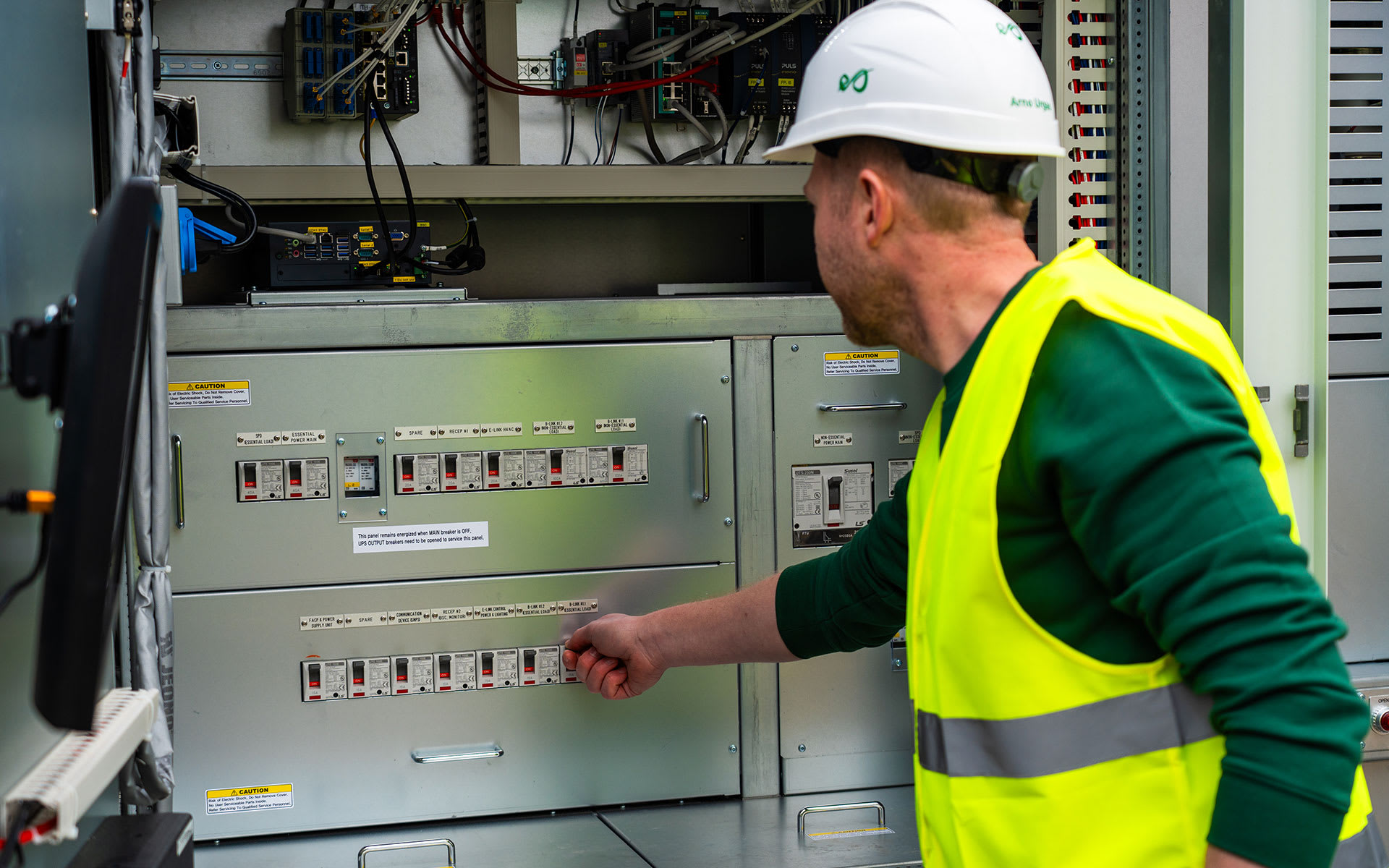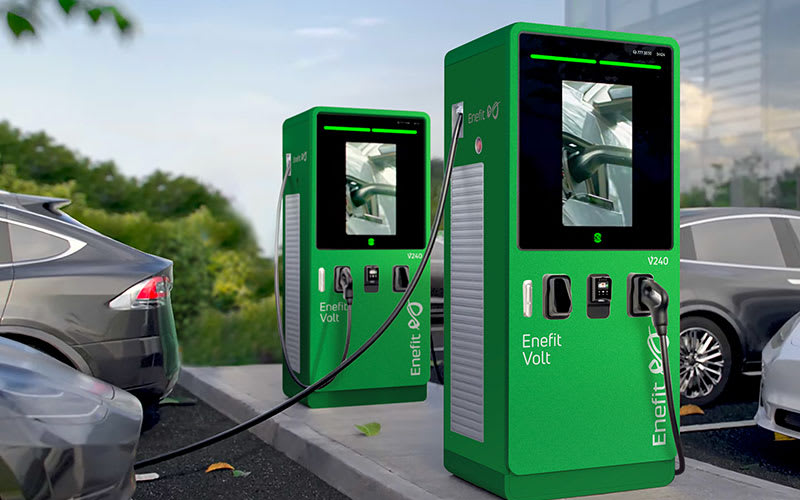Successful cooperation projects
Eesti Energia is participating in an international project funded by the European Union’s Research Fund for Coal and Steel (RFCS), where we explore how existing fossil boilers can be transformed into energy storage systems – the project is called HIGHWAY
Existing fossil-fired power plants can be retrofitted to become more environmentally friendly and flexible. These upgrades enable the storage and use of heat generated from renewable electricity. The system's performance is tested and analysed using various modelling approaches. The solution is evaluated in terms of energy efficiency, economic feasibility, and environmental impact. The €4 million project brings together leading European technical universities and energy industry stakeholders. The applicability of the developed solution is assessed within the project, with Eesti Energia contributing by providing a reference plant and analysing the practical implementation potential of the technology.
The project has received funding from the European Union 's Research Fund for Coal and Steel (RFCS) under Grant Agreement 101216794.
The project website is under development, more information available HERE.


Enterprise Estonia (EISA) supports Eesti Energia´s applied research project "Optimization of Electrical Devices and Reduction of Consumer Energy Prices in the Future Energy Systems“
The project results will enable Eesti Energia to develop a comprehensive equipment management service for customers with controllable devices, which will help keep their electricity bills as low as possible. Additionally, it will integrate the forecasting models of controllable devices and consumers into its energy trading strategy. The aim of the project is to create forecasting models that take into account the specific characteristics of the Baltic region, such as electricity and regulation market prices, weather data, and consumer habits. The resulting forecasting model can be used in energy pricing strategies across various markets.
This research and development project, numbered RE.5.04.24- 0564, has received support of 660,751.75 euros.

In 2023, the Environmental Investment Centre supported the application from Eesti Energia and Enefit Green for the "Energy Storage Pilot Project at the Purtse Wind and Solar Hybrid Park"
This pilot project addresses current challenges and opportunities in the energy sector—specifically, electrification and the use of renewable energy. To achieve carbon-neutral living, Estonia needs significantly more renewable energy. However, the production of wind and solar energy is an uncontrollable process, dependent on weather conditions in the production area. Consequently, there is a growing need for balancing controllable production or large-scale storage capacity in local markets.
Enefit Green is developing a unique solution in Estonia's Lüganuse municipality, creating a wind and solar hybrid park. A 21 MW wind farm and a 32 MW solar park will be constructed simultaneously, utilizing the same equipment, substation, and connection for electricity transmission to consumers. Additionally, the hybrid park will use a single grid connection capacity for both wind and solar-generated electricity. This approach is efficient because wind generates the most electricity from autumn to spring, while solar power peaks from spring to autumn. Consequently, the combined output of the two plants will be more consistent throughout the year, optimizing the use of limited grid resources.
As a result of the energy storage pilot project, a 4 MW/8 MWh battery storage system will be established at the Purtse wind and solar hybrid park. This will increase the adoption of electricity produced and stored from renewable sources, thereby enhancing the share of renewable energy in electricity systems while reducing the use of fossil fuels.
The project numbered 20.4.03.23-0060, has received support amounting to 1,000,000 euros. It plays a crucial role in the implementation of the group's strategy, supporting the journey of both Eesti Energia and Enefit Green towards a carbon-neutral economic model.


Enterprise Estonia supports the project by Eesti Energia titled "Applied Research and Process Technology Development for Upgrading Light Fractions of the Enefit Pyrolysis Process to Chemical Industry Feedstock"
Based on the development work carried out under the Applied Research Program, it is planned to build a plant for producing chemical industry feedstock from light fractions of oil shale pyrolysis. This will significantly increase the added value of the light fractions produced by Enefit Power. Through processing the light fractions, the company will be able to produce two types of chemical industry feedstock in the future: gaseous and liquid.
The project's innovation lies in process renewal, as the waste generated in the plant will be utilized and upgraded in the existing production. Previously, no processes have been developed worldwide, along with supporting technological solutions, for processing light fractions of oil shale pyrolysis into chemical industry feedstocks, which also enable the utilization and upgrading of all generated residues in existing production equipment. Additionally, the project will make it possible to avoid the current practice of burning semi-coke gas, which results in significant CO₂ emissions. The production in Auvere will supply raw materials to the international plastics industry and thus reach our everyday products.
This research and development project, numbered RE.5.04.23-0205, has received support of 880,484.05 euros.

Enefit Volt builds 70 electric vehicle charging stations with support of EU funds
With the help of EU funds, Enefit Volt is expanding its charging services to other local markets. The company will install 70 chargers with at least 150 kW capacity at 35 locations across 4 countries by the end of 2025, thanks to the CEF (Connecting Europe Facility) support. The chargers will allow drivers to charge their vehicles for up to 100 km in just minutes, depending on the vehicle model.
The chargers will be located along the TEN-T (Trans-European Transport Network) route that connects Tallinn and Krakow in the south of Poland, passing through cities like Riga, Vilnius and Warsaw.
This project is funded by the European Union's CEF Transport Alternative Fuels Infrastructure Facility with a grant of 2,000,000 euros under the agreement No. 101101639 and with a grant of 1,500,000 euros under the agreement No. 101137482.


Eesti Energia will participate in a major Europe-wide electric car project
Eesti Energia will be participating in a major Europe-wide electric car project aiming to develop user-centric and innovative next-generation charging solutions. The project will begin in 2020 under the leadership of Renault and will end at the end of 2023. The budget of the development project is EUR 19 million, of which the European Union will cover EUR 15 million. The project will have 33 partners across Europe (France, Netherlands, Italy, Estonia, Germany, etc.). Funded by Horizon 2020, the project aims to test and identify the best possible charging solutions for electric cars.
During the project, Eesti Energia will install ultra-rapid chargers for electric cars in the vicinity of Tallinn, with the capacity to stabilize the power network. Eesti Energia will be developing charging solutions for private and commercial users of electric cars to provide simple, convenient and useful charging services that will also support the highest possible quality of electrical connection anywhere in the network.
The project has received funding from the European Union 's Research and Innovation Program, Horizon 2020, under Grant Agreement 875683.

